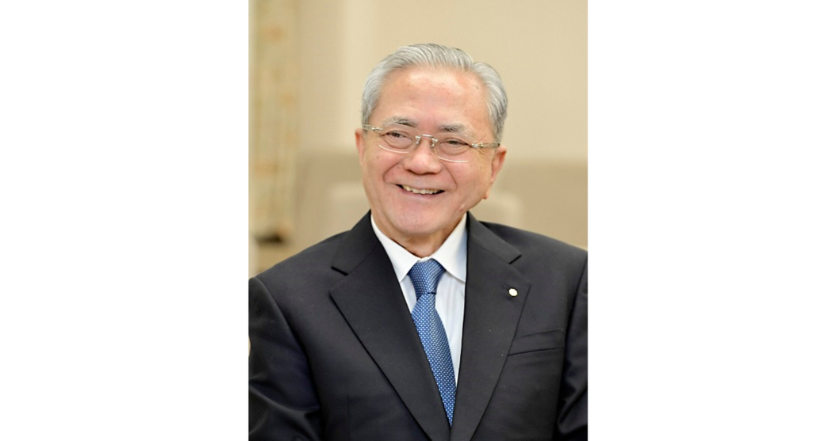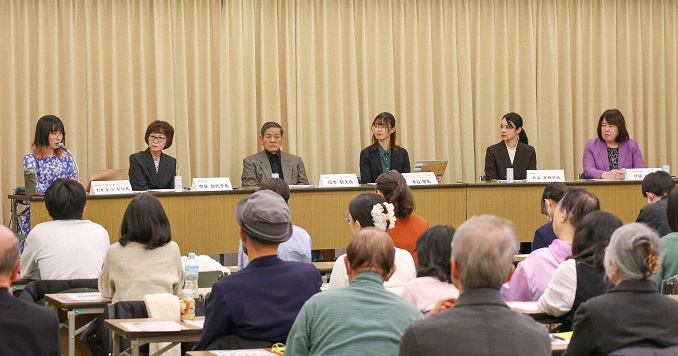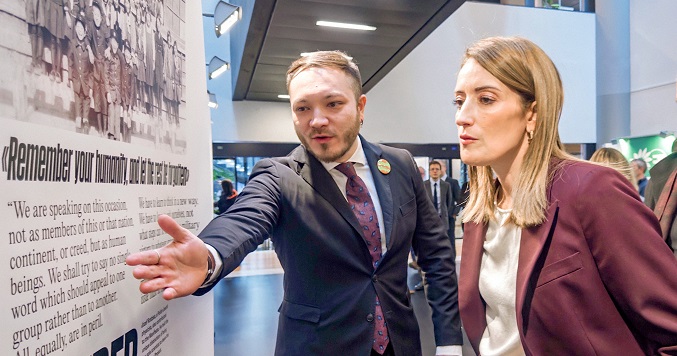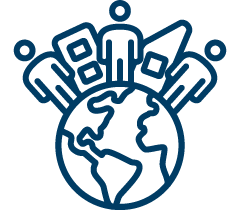- Small
- Medium
- Large
- Home
- In Society
- News Headlines
News Headlines
News Highlights from Seikyo Shimbun
(the Soka Gakkai's daily newspaper)
-
President Harada’s New Year’s Message Japan

Soka Gakkai President Minoru Harada has issued his New Year’s message to Soka Gakkai members around the world, titled “Strive Energetically for Kosen-rufu, Brimming with Vibrant Life Force!” In the message, carried in the January 2026 issue of the Daibyakurenge monthly magazine, he states that it was 65 years ago, on New Year’s Day, 1961, when President Daisaku Ikeda expressed his resolve to “create a hundred years’ worth of history in one year.” With this determination, later that month, President Ikeda embarked on his first visit to various countries and territories in Asia to encourage the few Soka Gakkai members there. In doing so, he took the first step toward the realization of his mentor second Soka Gakkai president Josei Toda’s vision of sharing the light of Nichiren Buddhism with the people of Asia.
President Harada describes Nichiren Buddhism as “a brilliant beacon piercing the darkness of our times” that, like the sun, casts “warm rays of hope upon friends facing adversity,” a philosophy that “pulses with life” as members around the world strive for kosen-rufu—world peace through the establishment of core values such as respect for the dignity of human life. He encourages members to draw on President Ikeda’s life as a guiding model in these efforts.
In closing, President Harada states:
“I am once again determined, this year, to give my all—for the attainment of Buddhahood by every member . . . and for the realization of lasting world peace . . .
"Let us each earnestly seek our mentor’s guidance, filling our lives with vibrant energy, and press forward boldly along the noble path of human revolution!” -
SGI Statement on Climate Crisis Now Available in Chinese, French and Spanish Global

Soka Gakkai International (SGI) ’s statement “Mobilizing Global Solidarity to Meet the Challenges of the Climate Crisis” is now also available in traditional Chinese, simplified Chinese, French and Spanish. The statement was originally issued in Japanese by the SGI Global Perspectives Committee on November 5, 2025, ahead of the 30th meeting of the Conference of the Parties (COP30) to the United Nations Framework Convention on Climate Change (UNFCCC) that took place in Belém, Brazil, from November 10 to 22. The statement describes the climate crisis as an “epochal challenge,” emphasizing global grassroots mobilization and the building of stronger institutions in which youth are mainstreamed as the pillars of climate action. It also says that the climate crisis is not beyond our capacity to resolve, that each and every one of us in civil society can raise our voices and take action.
-
Youth Forum Focuses on Abolition of Death Penalty Japan

On December 14, marking Human Rights Day (December 10), the Eighth Annual Youth Forum was held under the theme “To Protect Life—A Dialogue on Justice and Human Rights” and focused on the abolition of the death penalty. The event was co-organized by Amnesty International Japan and the Soka Gakkai Peace Committee, with the support of the United Nations Information Centre (UNIC). Kaoru Nemoto, director of UNIC in Tokyo, delivered opening remarks in which she spoke about the UN’s advocacy for humanitarian reform on the death penalty, stating that capital punishment contradicts human dignity and the right to life. A video message from Mario Marazziti, co-founder of the World Coalition Against the Death Penalty, was screened. He outlined the current global trend toward abolishing and reviewing capital punishment, the most extreme form of destroying life.
The video was followed by a discussion among five panelists including former prison guard Toshio Sakamoto, who said that a “genuine realization” of working with people who have been sentenced to death was that “people can change; every human being has the potential for improvement.” The topics discussed included phasing out the death penalty and increasing opportunities for younger generations to learn about its realities. -
100th Showing of Senzatomica Exhibition Inaugurated at European Parliament France

On November 25, during a plenary session, European Parliament President Roberta Metsola inaugurated the 100th showing of the “Senzatomica: Transforming the Human Spirit for a World Free from Nuclear Weapons” exhibition. The exhibition, an initiative of Be the Hope Foundation, an affiliate of Soka Gakkai Italy, was on display at the European Parliament in Strasbourg, France, from November 25 to 27. In her speech, President Metsola emphasized the crucial role of young people and affirmed the essential value of peace. Vice President of the European Parliament Pina Picierno also spoke, stressing the importance of the No First Use principle in preventing nuclear war, and Shigemitsu Tanaka, co-chairperson of Nihon Hidankyo, the 2024 Nobel Peace Prize laureate, sent a video message.
-
Initiatives
 Articles by Soka Gakkai members around the world on local activities to promote peace, culture and education.
Articles by Soka Gakkai members around the world on local activities to promote peace, culture and education.
-
Global Issues Resources
 Resources created by the SGI to raise awareness of global issues and inspire action toward a peaceful, sustainable world.
Resources created by the SGI to raise awareness of global issues and inspire action toward a peaceful, sustainable world.
-
SGI Action for Peace Website
 SGI’s peace activities around the world and resources and information related to key issues including disarmament, human rights and sustainability.
SGI’s peace activities around the world and resources and information related to key issues including disarmament, human rights and sustainability.




